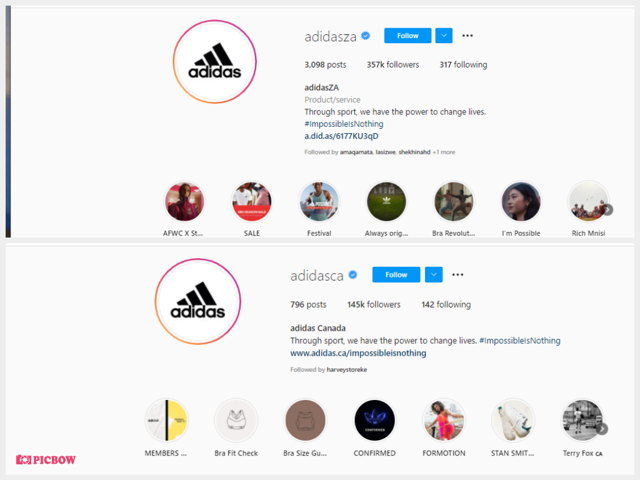With more than half the world’s population on social media today, brands can reach more people globally. But with nearly every business having social media accounts, your business needs to ensure the content you put up is more compelling to your target audiences.
Different customer groups will relate to your content for various reasons. Some people will love your content because it’s informative, while others appreciate your consistency. On the other hand, others will like how your social media team engages with them. Your content should be good enough to build good relationships and earn you loyal customers who boost your social media ROI.
To ensure the success of your social media strategy, your social media team needs to share your goal and mindset to ensure consistency in the content. To achieve this, you need to have a social media style guide that dictates and aligns how your entire team communicates and engages with your target audience.
Here are steps each brand should follow to create the best social media style guidelines:
1. Establish your brand voice
Every company has a specific social media voice they adopt to communicate to their followers and target audiences effectively. When developing your social media style guide, look at your brand voice as the brand’s personality. You need to understand that you are, in a way, humanizing your brand.
First, you need to choose words that best describe your brand’s voice. You could choose to be educational, inspirational, sophisticated, playful, or many other adjectives. But for you to find the fitting voice, you need to understand the words that describe your brand best and appeal to your audience personas.
Once you have decided on your voice, ensure it's translated into your tone. The tone guides your team's use of the voice to convey different messages. For example, Netflix has a consistent voice that tells users about the latest shows. They also ensure their audience identifies what the post is about by using the same language used in the show.

Source: Netflix US
Keep in mind that your social media team plays a vital role in establishing your brand’s voice. Allowing your team to share ideas makes it easier for them to execute your social media style guide effectively. To ensure you are all on the same page, you can also use an existing guide like the AP style guide or the Chicago Manual of Style.
2. Align your social media accounts
Aligning your social media accounts allows you to spread similar messages, though differently structured, on different social media platforms. It also helps brands get the attention of different target audiences with varying preferences in terms of social media platforms.
Remember, the wider the reach, the greater the brand visibility. An extensive reach also helps you get ideas about customer preferences. You can grow your content marketing and ranking strategies and see SEO results with that knowledge.

Today most businesses use multiple social media profiles and active accounts for various products and locations. In cases where a brand operates in multiple locations, messages differ due to different management and content goals. But most still maintain brand cohesion through the language and logo representation.
A good example is Adidas. Though each Instagram account posts different content for each country, most have the company’s logo as the profile picture and similar Instagram bios. This makes it easy to differentiate the official accounts from other accounts using similar usernames.

Another way to align your social media accounts is repurposing content. For instance, you can change a social media image size and edit content captions to use from platform to platform. However, you need to ensure repurposed content remains consistent with the existing brand guidelines.
Here is an example of a post by The Economist. They have the same message, but structured differently for Twitter and Instagram:


Finally, you can also hop on new social media trends and social media tools to make work easier and give you an advantage. For instance, you can use trending social media aggregator tools, like Curator, that collect relevant content and help you showcase it in one feed.
Don't forget that you can maximize your content by embedding it on your website with a widget.
3. Set formatting guidelines
Your social media content format should serve your brand’s purpose but still appeal to your followers and general audience. Though formatting styles differ, due to factors like different sectors, here are a few points to consider when coming up with your formatting guidelines:
- Use short and easy to read sentences
- Draw the reader in on your first sentence
- Use relevant images
- Use relevant hashtags on each platform
- Shorten links using tools like bit.ly
- Specify how to utilize mentions and emojis
- Specify how to use User Generated Content
You also need to consider existing content guidelines for the different social networks and develop alternatives to communicate effectively for your social media style guide. For instance, Instagram does not have a clickable links option in post captions. The alternative can be linking your account to Linktree. On your stories, you can use the Instagram Stories link sticker to add external links.
Linktree allows you to add a link on your Instagram bio that guides your audience to other external pages. For Twitter, which has a 280-character limit, you can create a tweets thread instead.
4. Establish social media branding guidelines
Your social media guidelines will define your accounts' look and general feel, because they dictate how content is created and how to post it on various platforms.
The most basic guideline any brand should include and adhere to is the logo and brand colors. The two help in social media branding by ensuring visual content consistency and helping identify your brand. Most multinational brands have adopted the guideline by ensuring their content or graphics are in brand colors and using their logo as their profile picture.
 Source: Instagram
Source: Instagram
The other crucial factor is the font used on images and other visual content. You can not control the fonts in the captions, but can control the fonts that appear in the visual content. Whether you use an existing font or have one custom-made for your brand, ensure that you use it consistently.
Other guidelines you need to consider when coming up with branding guidelines include:
- Punctuation marks like commas and dashes
- Use of hashtags
- Links limit and styles
- Dates and time styles
- Crediting curated content
For a platform like Instagram, where people interact with the content on stories as much as they do with the feed, you need to include an Instagram Stories guide to ensure consistency. This is because unlike your Instagram feed, you have a choice of fonts, colors, and templates on your stories.
5. Set language consistency guidelines
Consistency is a crucial social media policy to consider when creating your social media style guide in terms of content structure. The first step to ensuring consistency is picking a dictionary to ensure your grammar is correct. Your dictionary choice will vary depending on your target location.
For instance, if you’re looking to attract a UK audience, you must remember that the spelling differs from US English. You will spell organization with an s and z in American English in the UK. Ensure your entire social media team has access to the dictionary by including it in your company’s social media style guide.
To avoid spelling, grammar and punctuation dilemmas, ensure you stick to one style to ensure consistency in your social media content.
6. Draft a situation response playbook
A situation response playbook is mainly used to dictate a brand’s engagement on social media to avoid redirecting your social media budget to damage control. It mostly entails how a brand will interact with its customers and competitors in different situations.
Today's most scandals spread quickly on social media networks due to its vast reach. If your brand finds itself in a compromising situation, it takes minutes for a cancel hashtag with your brand’s name to take root. So your playbook is only complete if it outlines how to respond to social media crises.
In your social media style guide, you need to include a list of instant actions to be taken and clearly state the person to take charge. For instance, whenever an unhappy customer leaves a negative comment, your social media manager should not delete it. Instead, they should respond by acknowledging the problem and offering to take the conversation offline.
Your guide should also include guidelines on responding to external crises. For example, in case of a calamity, you don’t want to post about offers and giveaways when others are still recovering from its effects. Doing so risks your brand being labeled as insensitive.
In Closing
A good social media style guide allows a brand to post content that resonates with the audience and ensures the success of its social media strategies. White label social media may also assist you in developing a better style for your social media brand, so keep reading.
To create a social media style guide, you should first establish a brand voice. Next, you have to align your social media accounts, specify your formatting guidelines, create language guidelines, and develop a situation response playbook.
Creating a social media style guide that truly represents your brand is a long process involving testing and revisions. Be open to making changes and trying new things till you find what works best for your brand. You should also be open to adapting to new social media sites and guidelines.
Check out Curator's list of free social media aggregator tools.